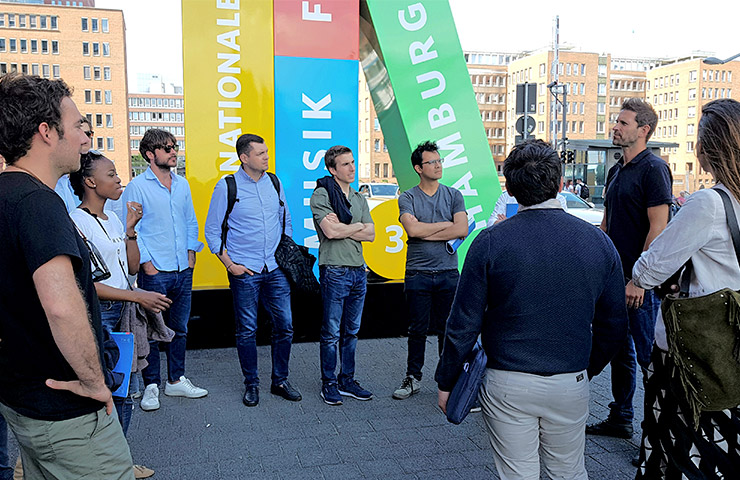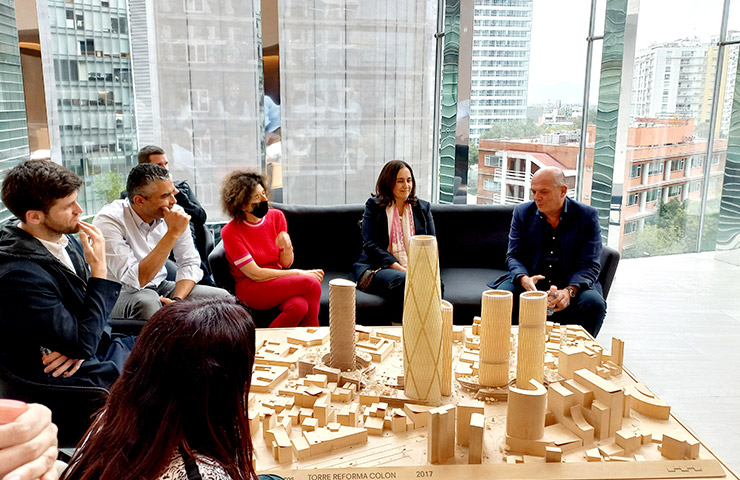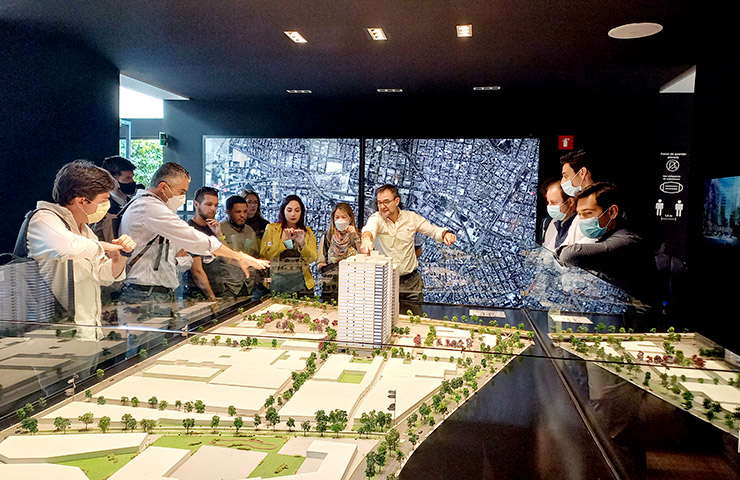26/04/2022
Ryan Theodore, student at the IE Global Master in Real Estate Development, explores how the role of the architect as developer can strengthen the real estate development process and outcomes.
Traditionally, architects have been perceived as artists who create amazing designs but lack insight into the business aspect of development. However, an increasing number of architect-as-developer professionals like Ryan Theodore are breaking the mold and transitioning into development and investment.
Ryan has accumulated over 20 years of experience in a diverse range of roles across multiple continents. He has worked at several high-profile offices, including Sir David Chipperfield, Sir Peter Cook and Qatari Diar. He has also worked in private practice, consultancy and held various roles in government, including investment and development. Now, as a student in the Global Master in Real Estate Development at IE University, Ryan is a star example of the “architect as developer” transition.
Why the “architect as developer” role is key
As Ryan explains, real-estate development is typically a high-risk, complex undertaking involving a multitude of professionals. These professionals are pieced together to carry out purposeful tasks and activities in a staged, time-conscious manner. The design and building process is both intrinsic and complex.
Typically, the architect’s role is to lead and develop the project design in collaboration with the so-called ‘design team’. Ultimately, the team bring the brief to life through design. Furthermore, the design team play a key supporting role to the contractor through the construction phases.
Overall, this is typically a complicated process and requires much skill and ability. You have to have an overarching understanding of not just the building’s spatial and functional arrangement, but also town-planning requirements, technical compliance, specifications, quality management, approval processes, legalities, and so forth. When a suitably skilled and experienced architect moves onto a developer team—stepping into the “architect as developer” role—they bring considerable experience, skill and capability. However, that experience is now on the ‘client side of the table’ and within the ‘leadership team’ of the project.

The position of understanding and influence is greater, and a stronger position of leadership and knowledge is established.
There are myriad benefits to this, including:
- The selection of a more appropriate design team that’s better suited to the project type.
- A proper understanding and encapsulation of the project drivers, requirements, and specifications into a comprehensible brief.
- Structured design processes that ensure project requirements are properly incorporated.
Ryan gives the example of Chelsea Barracks Phase 4, a Qatari Diar project in central London that had several very complicated design processes. Through solid leadership, management, transparency, communication and a very competent design team, the project team overcame every hurdle. Expectations were always managed, and this paid dividends through the construction process, ultimately achieving better value for money, ROI and quality of product. The final result provided a better sense of place, not only for those who will live and work at the development, but also as a contribution to the city. Ordinarily, a developer wouldn’t have the same capability and ability to achieve the same result.
While there are many opportunities for architects to make a positive contribution to the quality of development, it’s not easy to transition to the business side.

Stepping into the shoes of a developer is a different world and there is much to learn. The working approach and line of thinking is different in several ways. An architectural education doesn’t automatically equip students to manage the business of development. It takes considerable time to gain an understanding of economics, business planning, finance, analysis, and investment strategies. The Global Master in Real Estate Development allows you to acquire all the key fundamentals in an efficient manner.
As Ryan further notes, the client-development team puts the development and building design in the spotlight. Thus, the building’s function becomes clearer and the goal posts are more defined. Those team members can then communicate this to the design team far sooner, avoiding delays and minimizing poor design results.
Career advancement through the right education
True to his own advice, Ryan was interested in expanding his knowledge of real-estate development, to not only broaden his existing knowledge but also to fill gaps, complement and round off existing professional experience. On this basis, Ryan then started an international search for a holistic, executive-level master’s program related to real estate, development, investment and sustainability. After researching various international programs, he found the Global Master in Real Estate Development at IE University. It allured him for many reasons, with a main on being the blended format.

The program combines online and face-to-face sessions over the course of 15 months, enabling Ryan to study from his current base in Qatar.
Ryan also valued the fact that the program bridges both the IE School of Architecture and Design and IE Business School, resulting in a broader range of knowledge bases and opportunities to network. He highlights that this education experience goes far beyond the curriculum. Specifically, the global nature of the program enhances the experience and ensures that students can tap into the diversity and wealth of experience that their peers and teachers bring to the classroom.
Th architect as developer and the redefinition of career paths
The Global Master in Real Estate Development provides Ryan with a comprehensive, end to end understanding of real estate development, investment, innovation, sustainability and influences which shape our cities in these particularly unique times when real estate is changing at a rapid pace. As Ryan says, the progressive and practical academia complements his existing professional experience and this new combination provides him with greater clarity and awareness to make better informed strategic contributions to development, investment and place making undertakings, along with playing a stronger leadership role.
Ryan would recommend the course to any existing real estate professionals looking for a globally focused, executive master’s qualification in real estate development and or non real estate related professionals, such as practicing architect’s wanting to transition into development.
Ryan summarizes his experience thus far in two words: holistic and engaging.








